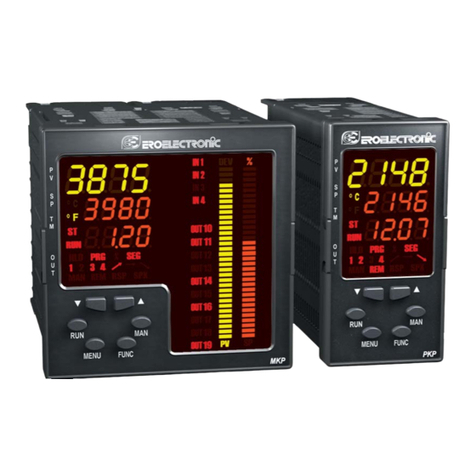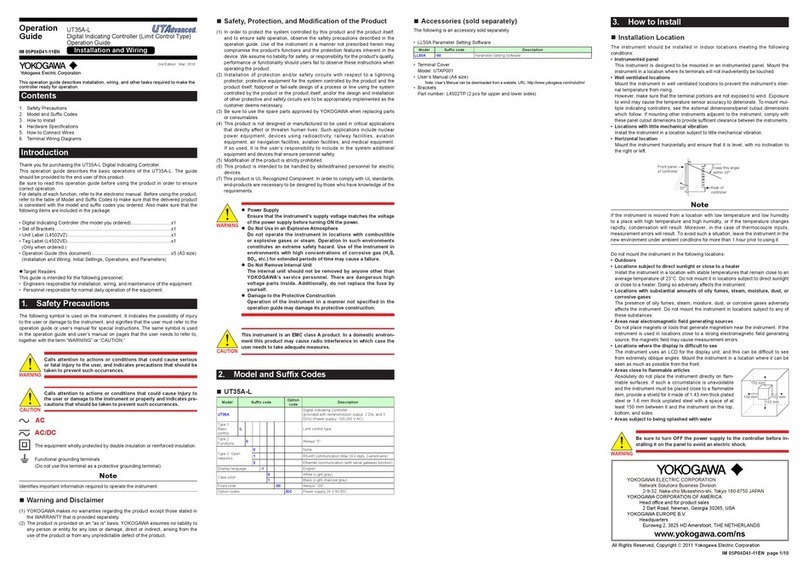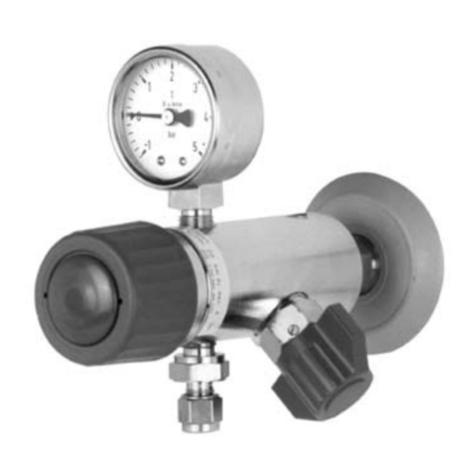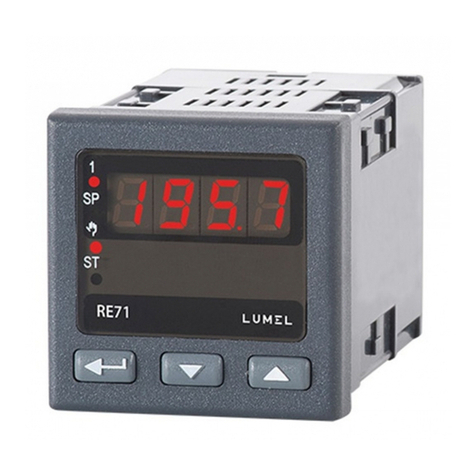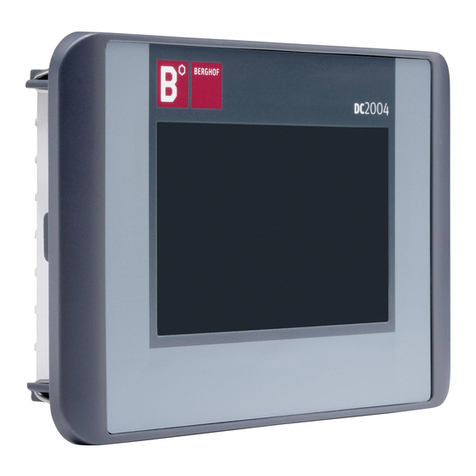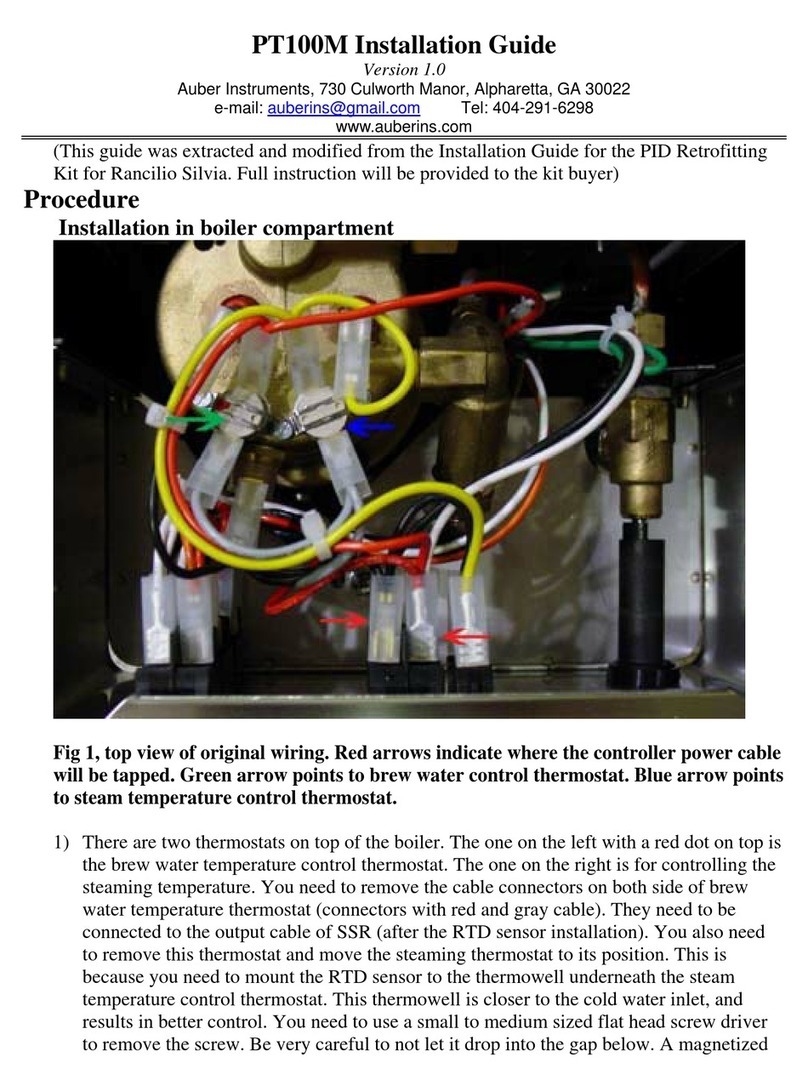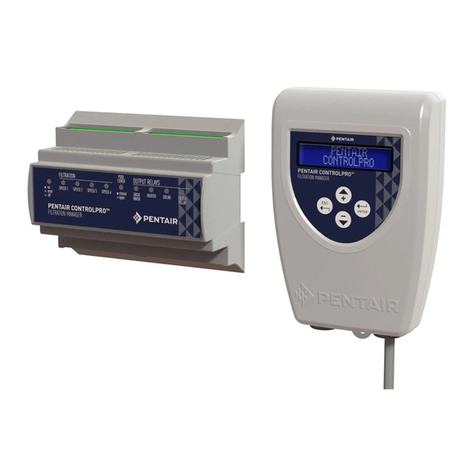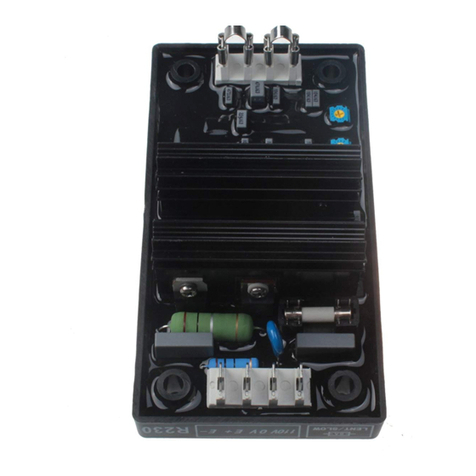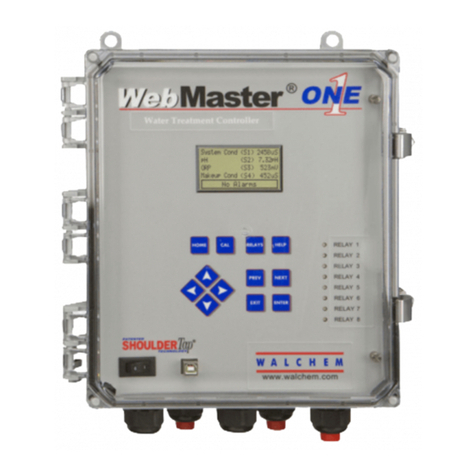Technisonic Industries Limited TAC-2OOA User manual

DUAL AUDIO CONTROLLER
MODEL
TAC-2OOA
Installation and
Operating Instructions
Til Document No.
96REl97
Rev. D
June 1997
7;STechnisonic
Industries Limited
250 Watline Avenue, Mississauga. Ontario
L4Z
1 P4 Tel:(905)890-2113 Fax:(905)890-5338
656 North French Road, Suite 2, Amherst, New
York
14228 Tel:(716)691-0669

CAUTION
This unit contains static sensitive devices. Wear a grounded wrist strap and/or conductive
gloves when handling printed circuit boards.
WARRANTY INFORMATION
The Model TAC-200A Audio Controller is under warranty for one year from date of purchase.
Failed units caused by defective parts, or workmanship should be returned to:
Technisonic Industries Limited Technisonic Industries Limited
250 Watline Avenue 656 North French Road, Suite 2
Mississauga, Ontario L4Z 1 P4 Amherst, New York 14228
Tel: (905) 890-21 13
Fax: (905) 890-5338 Tel: (716) 691-0669
A Page

REV
C
D
PAGE
2-3
2-6
2-3
REVISIONS for DOCUMENT??
9(
DESCRIPTION
FIGURE 2-2 Corrected pin
ID’s.
on 15 pin “D”.
FIGURE 2-5 Moved signal flow
direction arrows from pins 9 to
1 and 11 to 3.
FIGURE 2-2 changed pinout
diagram to reflect corrected
pinout sticker. TAPE L and
TAPE R were reversed
IE197
DATE
17/03/97
17/04/97
11/06/97
APPROVED
REV Page

TABLE OF CONTENTS
Paragraph
Title
Page
SECTION 1GENERAL DESCRIPTION
1.1
Introduction ............................................. l-l
1.2 Description .............................................. 1-l
1.3 Purpose of Equipment ...................................... 1-1
1.4 Model Variations .......................................... l-l
1.5 Technical Summary ........................................ l-3
1.6 Operational Limitations ..................................... 1-3
SECTION 2PREPARATION FOR USE AND STORAGE
2.1
2.2
2.3
2.4
2.5
2.6
2.7
2.8
2.9
2.10
2.11
2.12
2.13
2.14
2.15
General ................................................ 2-l
Equipment Packaging Log ................................... 2-l
Wiring Requirements ....................................... 2-l
Audio Panel installation ..................................... 2-l
Kit Contents ....................................... 2-2
Pin Connections and Locations ........................... 2-2
Headphones ....................................... 2-2
Microphones ....................................... 2-2
PTT ............................................. 2-3
Main Power ........................................ 2-3
DIR Audio In ....................................... 2-3
ICS Tie and ICS Keying ................................ 2-9
Backlighting ........................................ 2-9
Ground ........................................... 2-9
Storage ............................................... 2-l 0

LIST OF TABLES
Table No. Title
l-l
l-2
2-l
2-2
2-3
Operational Limitations ...........................
.........
l-3
General Specifications ............................ ......... l-4
50 pin CANNON “D” Pin Connections ................. ......... 2-7
37 pin CANNON “D” Pin Connections ................. ......... 2-8
15 pin CANNON “D” Pin Connections ................. ......... 2-8
Figure No.
l-l
2-l
2-2
2-3
2-4
2-5
2-6
3-l
3-2
LIST OF ILLUSTRATIONS
Title
TAC-200A Dual Audio Controller
-
General View .................... l-2
Outline Drawing .......................................... 2-2
Pinout Diagram for 50 pin and 37 pin CANNON “D” Connectors ......... 2-3
Connection Diagram for 50 pin “D” Connector ..................... 2-4
Connection Diagram for 37 pin “D” Connector ..................... 2-5
Connection Diagram for 15 pin “D” Connector ..................... 2-6
GROUND Isolation Jumper Locations ........................... 2-10
TAC-200A Front Panel Operators Switches and Controls .............. 3-l
TAC-200A Configuration Controls .............................. 3-4
.
.
III

SECTION 1
GENERAL DESCRIPTION
1.1
INTRODUCTION
This publication provides operating and installation information on the Model TAC-200A,
Dual Audio Controller manufactured by Technisonic Industries Limited. This unit is designed
to provide high performance operation for installations requiring two completely independent
audio controllers in a single panel mounted box. The pinout configuration of the rear
interconnects, is optimized for superior operation specifications, and is plug and pin
compatible with the ACCESS/A family of products.
1.2
DESCRIPTION
This high power audio controller delivers 500 mW of audio per side into 600 ohms at less
than 2% distortion. Separate pilot and co-pilot transmit selector switches allows either
operator to select any of the five aircraft communications transceivers or PA amplifier, while
an audio input selector switch for each input allows selection of any combination of, or all,
of the eight available aircraft audio inputs.
The TAC-200A has front panel selectable and adjustable VOX, LIVE or KEYED intercom
(ICS). An EMERGENCY mode switch provides “straight through” transmit and receive audio
for the pilot on the selected communications channel. The ISOLATE switch allows the pilot
to isolate himself from the co-pilot (and the ICS system), so that he and the co-pilot may
access different communications at the same time. In the NORMAL position, the pilot’s
audio is provided as selected by the co-pilot and is part of the ICS system. Separate RX and
ICS volume controls are provided on each side of the panel along with a single ICS VOX
threshold control. The TAC-200A will also provide ICS support for up to seven headsets.
1.3
PURPOSE OF THE EQUIPMENT
The TAC-200A Dual Audio Controller is designed to provide centralized audio management
and control within an airborne communications environment. The unit has been packaged
to minimize size and weight characteristics and is ideally suited for helicopter installations.
The TAC-200A meets all of the requirements of US Forest Service “contractor furnished
avionics” and can be used in conjunction with a TiL FM airborne transceiver to comply with
all US Forest Service Contract Requirements. The product is also compliant with DO-160C
categories relating to frequency response, cross-talk, vibration, humidity, temperature and
altitude in an airborne environment.
1.4
MODEL VARIATION
The TAC-200A comes in two possible configurations. A +28VDC panel lighting version
and a +5VDC panel lighting version. Operationally the two are identical. The default is
+28VDC backlighting. The backlighting is achieved through solid state devices, and
produces virtually no heat and a light wavelenght of approximately 580nm. The front panel
background colour itself, is a choice of either matte black or Cessna cadet grey. Default is
black. See TAC-200A price list for model variations.
l-l

FIGURE l-l TAC-2OOA DUAL AUDIO CONTROLLER
-
GENERAL VIEW
l-2

1.5
TECHNICAL SUMMARY
A summary of the relevant electrical, operational, mechanical and physical characteristics of
the control panel are given in Table 1-2, General Specifications.
1.6
OPERATIONAL LIMITATIONS
These specifications are the minimum and maximum operating characteristics, within which
the TAC-200A should operate reliably. Table l-l shows the operational limitations of the
TAC-200A.
TABLE l-l OPERATIONAL LIMITATIONS
POWER IN ...................... Min.
+30Vdc
(continuous)
Max. + 35Vdc
FUSE
.......................................... 3A
TEMP
..................................... Min. -40°C
Max.
+71”C
HUMIDITY
...................... Max. 95% Non Condensing
MIC Signal level ............................. Max. -6dBm
Impedance ............................... Min. IOOR
Max.
IKR
COMM 81 ICS TIE SIGNALS:
Transceiver Signal level ..................... Max. +15dBm
Impedance ............................... Min. IOOQ
Max. 1KQ
Receiver Signal level ...................... Max. + 15dBm
Impedance ............................... Min. IOOQ
Max.
IKQ
ICS Bus Signal level ....................... Max. + 15dBm
Impedance ............................... Min. IOOR
Max.
IKQ
HEADSET OUTPUT LOADING ..................... Min. 1 OOR
Max.
IKR
I
l-3

TABLE
1-2
GENERAL SPECIFICATIONS
MODEL TAC-200A
Dual Audio Controller
PHYSICAL CHARACTERISTICS:
Width ................................................... 5.76 inches
Height ................................................... 1.90 inches
Depth ................................................... 6.00 inches
Weight (max.) ...........................................2.0 Ibs. (909 g)
Mounting ...................................... Standard Dzus, 4 fasteners
POWER SOURCE REQUIREMENTS:
DC Voltage (Negative Ground) . . . . . . . . . . . . . . . . . . . . . . . . . . . 28 Vdc (-20% +15%)
DC Current . . . . . . . . . . . . . . . . . . . . . . . . . . . . . . . . . . . . . . . . . . . 350 mA (nominal)
Backlighting Input:
Standard . . . . . . . . . . . . . . . . . . . . . . . . . . . . . . . . . . . . . . . . . . 28 Vdc
@
150
mA
Optional . . . . . . . . . . . . . . . , . . . . . . . . . . . . . . . . . . . . . . . . . . 5
Vac
@
700
mA
TECHNICAL CHARACTERISTICS:
Input Impedance ....................................1000 Ohms (minimum)
Headset Output Impedance ...................................... 56 Ohms
Audio Power Output ...................... 500 milliwatts (per side) into 600 Ohms
Audio distortion ............................. less than 2% THD at rated output
Audio Frequency Response ................... within 3 dB from 300 Hz to 6000 Hz
Hum and Noise Level .................................... better than 50 dB
Input Muting (when mic is keyed) ............................ better than 55 dB
Deselected input isolation ...................... better than 60 dB between inputs
ENVIRONMENTAL:
Temperature ...................................... -40°C to
+70”
Celsius
Humidity ........................................... 95% Non-condensing
Shock ................................................. 12 g (any axis)
Altitude .................................................. 15,000 feet
l-4

SECTION 2
INSTALLATION INSTRUCTIONS
2.1 GENERAL
This section contains information and instructions for the correct installation of the TAC-
200A,
Dual Audio Controller.
Make certain that the unit is correctly operating in accordance with the equipment user’s
requirements prior to releasing the equipment for service.
2.2 EQUIPMENT PACKING LOG
Unpack the equipment and check for any damage that may have occured during transit.
Save the original shipping container for returns due to damage or warranty claims. Check
that each item on the packing slip has been shipped in the container. Verify that the
equipment’s backlighting configuration is the same as that required.
2.3 WIRING REQUIREMENTS
Airframe wiring should be MS22759 Tefzel or Raychem 44 (81044) single conductor and
shielded wire. Heatshrink solder sleeves (such as Raychem or equivalent) should be utilized
for shield termination.
All Microphone audio input line connections should be made with Shielded Cables. Audio
output lines may be twisted pairs. The power cables should be a minimum of #22 AWG.
Keying lines may be #24 AWG
DO NOT bundle low level audio lines with RF coaxial cables, motor, pump or blower wiring
which can cause coupling between the various systems, especially during RF transmission
or pump\blower mechanical operation. Maintain as much distance as possible from these
types of wire bundles.
2.4 AUDIO PANEL INSTALLATION
The TAC-200A Audio Panel is designed to be Dzus mounted and should be installed in
conjunction with installation kit P/No. 969732. See Figure 2-1 for and outline drawing of
the unit with dimensions to facilitate the installation.
All configurable and variable options of the TAC-200A can be set or changed simply and
without requiring the opening of the unit.
-
A block diagram of the 50 pin “D” connections is provided in Table 2-l
-
A block diagram of the 37 pin “D” connections is provided in Table 2-2
-
A block diagram of the 15 pin “D” connections is provided in Table 2-3
2-l

l- 0 026
FIGURE 2-1 Outline Drawing for Model TAC-200A Audio Controller
2.5 INSTALLATION
-
KIT CONTENTS
The installation kit P/No. 969732, consists of:
1.
One 50 pin Cannon D mating connector (female) complete with crimp pins and hood.
2.
One 37 pin Cannon D mating connector (female) complete with crimp pins and hood.
3.
One 15 pin Cannon D mating connector (male) complete with crimp pins and hood.
2.6 INSTALLATION
-
PIN LOCATIONS AND CONNECTIONS
The pin numbers and locations for the 50, 37 and 15 pin Cannon
D
connectors, located on
the rear of the TAC-200A Audio Controller, are depicted in Figure 2-2. Pin connections
descriptions are provided in Tables 2-1 (50 pin
“D”),
2-2 (37 pin “D”), and 2-3 (15 pin
“D
“)
.
2.7 HEADPHONE INSTALLATION
The TAC-200A is intended for use with industry standard 600 ohm headphones there is no
provision for connection to an 8 ohm or 4 ohm speaker. All Headphone connections for
Pilot, Co-pilot, and Passengers are listed in Table 2-3 (15 pin “D”).
See also the connection diagram Figure 2-5.
2.8 MICROPHONE INSTALLATION
All microphone connections to the TAC-200A must be done with shielded cables. The
inputs are intended for use with standard Carbon or equivalent Microphones. Microphone
connections are listed in Table 2-1 (50 pin “D”).
See also the connection diagram Figure 2-3.
2-2

0
#
GROUND
MC
SIG’S.
MAIN GND
i::$:i
KEYING LINE
FIGURE 2-2 Pinout Diagram for 50 pin, 37 pin, and 15 pin “D” connectors
2.9 PTT CONNECTIONS
The Pilot, Co-pilot and rear microphones require a PTT (Push To Talk) button or switch to
key the transceivers as required. If a Hand-held microphone is used, tie the PTT button to
the appropriate key line. If the Microphone is incorporated into the Headset. An external
Switch
ie/
the cyclic switch, will be required to Key the transmitter. Any audio received by
the Pilot, Co-pilot or Rear microphones without the PTT keyed, will pass through the
intercom.
The Pilot, Co-pilot, and Transceivers are keyed by applying Ground to any one of the
appropriate key lines listed in Table 2-1 (50 pin “D”).
See also connection diagram Figure 2-3.
2.10 MAIN POWER +28VDC
The main power +28VDC
(
t
20%) is connected to pin 17 of the 50 pin (lower)
“D”connector. As previously indicated, this connection should be made with #22 AWG
wire. See Table 2-l (50 pin "D”). See also connection diagram Figure 2-3.
2.11 DIR AUDIO IN
The DIR audio input is an input source which is connected directly to the headset amplifiers,
and is not affected by any of the front panel control settings. This input is typically used for
audible warning system tones or other signals which must be audible at all times. The
output level is adjustable only by the potentiometer on the left side of the unit.
See Figure 3-2.
2-3






2.12 ICS TIE AND ICS KEYING
The ICS Bus is a bidirectional audio line allowing connection of multiple intercom systems and
panels in one installation. This can be achieved simply by connecting together all of the ICS Bus
signals of all the devices.
PLEASE NOTE:
In installations where separate ICS keying for the passengers is not possible, the PAX ICS
Keying line must be connected to ground for the intercom to work with the VOX knob in the
keyed (fully counter-clockwise) position.
See Table 2-l (50 pin “D”). See also connection diagram Figure 2-3.
2.13 BACKLIGHTING POWER + 28VDC
/
+
5VDC
The backlighting power for the front panel of the TAC-200A is supplied via pin 3 of the 50pin
connector for
+28VDC,
and pin 2 of the 50 pin connector for
+5VDC.
Do NOT supply more
than + 5VDC (-15% +15%).Unless ordered and indicated otherwise on the rear of the
TAC-
200A, the unit is shipped with the
+28VDC
backlighting option.
See Table 2-1 (50 pin "D”). See also connection diagram Figure 2-3.
2.14 GROUND
The TAC-200A Audio Controller is designed for optional Ground Isolation from the Airframe.
This is necessary in some cases where the Airframe Ground might cause noise in the Audio
system. The TAC-200A is factory configured for Isolation. Despite the nomenclature, all ground
lines are common. If ground isolation is not required or desired, the ground isolation jumpers
may be connected. See Figure 2-5 for location of ground isolation jumpers.
Main ground to the Audio Controller is on pin #34 of the 50 pin “D” connector. All other
grounds are common to this and are on pins #1, #35
-
#44, #46
-
#50 these GROUND
connections are depicted as shaded cells in Table 2-l.
Ground connections on the 37 pin “D” connector are on pins #4, #20, #22
-
#30, and #33
-
#37. These GROUND connections are depicted as shaded cells in Table 2-2.
Ground connections on the 15 pin “D” connector are on pins #6, #9
-
#I 1, and #14
-
#15.
These GROUND connections are depicted as shaded cells in Table 2-3.
2-9

UAlN
BOARD
GROUND ISOLATION,
JUMPER
-
35
I
SWITCH
SWITCH BOARD
GROUND ISOLATION,
JUMPER
-
34
II
- -
Ii
U
-
INTERNAL VIEW
-
S’rVITCH BOARD
(LID REMOVED)
BOARD
1
ISOLATIC’.
-
35
INTERGL
VIEW
-
WAIN BOARD
[LID AND SNITCH BOARD REMOVED)
FIGURE 2-6 GROUND ISOLATION JUMPER LOCATIONS
2.15 STORAGE
When not in use, Store the TAC-200A in the original Anti-Static bag if possible and in a non
Humid place. Storage temperatures should not exceed + 70°C or be less than -40°C.
2-10

SECTION 3
OPERATING INSTRUCTIONS
3.1 FRONT PANEL OPERATORS SWITCHES AND CONTROLS
This section deals with the explanation and description of all the controls of the TAC-200A
Audio Controller. All Pilot and Co-pilot Controls are on the front Panel of the unit and are
variable or selectable.
The TAC-200A Maintains the industry Standard configuration of Pilot on the Right and Co-pilot
on the Left ergonomics. A complete definition of the controls are given in Figure 3-l.
3.1
.l
INTERCOM
KN!NG
MODE
AND SENSITIVITY SELECTOR
3.1.2 CO-PILOT RX MONITOR
3.1.3 CO-PILOT INDICATOR
3.1.4 CO-PILOT INTERCOM
VOLUME CONTROL
3.1.5 CO-PILOT TRANSCEIVER
-
VOLUME CONTROL
3.1.6 CO-PILOT
-
TRANSCEIVER
SELECTOR
PILOT INTERCOM
VOLUME CONTROL
PILOT TRANSCEIVER
VOLUME CONTROL
3.1.12
olLC)T
TRANSCEIVER
SELECTOR
FIGURE 3-1
TAC-200A
FRONT PANEL OPERATOR’S SWITCHES AND CONTROLS
3.1
.1
INTERCOM KEYING MODE AND SENSITIVITY SELECTOR
This adjustment selects VOX mode ON or OFF. In the ON mode, the audio produced by any of
the microphones will break the squelch of the intercom and will be routed through the intercom
system. The threshold audio level required to break the squelch is also adjustable by this knob.
A setting of fully clockwise on the knob will leave the intercom keyed at all times. When set
to OFF (fully counterclockwise), the intercom will only receive audio when intercom PTT is
keyed.
3.1.2 CO-PILOT RX MONITOR
These four switches indicated
COM1
, COM2, FM1 and FM2, allow the Co-pilot to monitor the
Receivers
-
independant of the setting of the Transceiver SELECTOR (3.1.6). Any number or
combination may be used at the same time.
3-1
Table of contents
Popular Controllers manuals by other brands
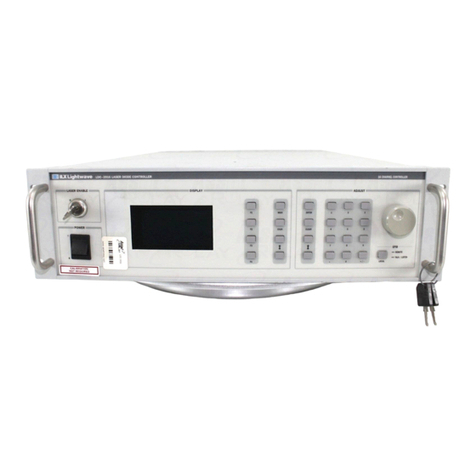
ILX Lightwave
ILX Lightwave LDC-3916376 user guide
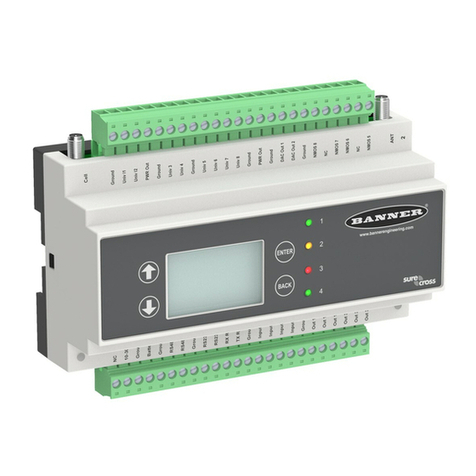
Banner
Banner DXM150-S2 instruction manual
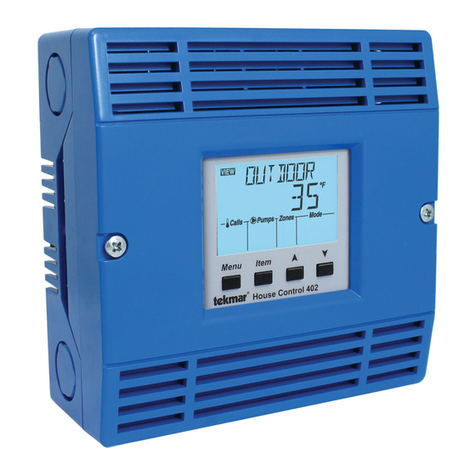
Watts Industries
Watts Industries Tekmar tekmarNet2 House Control 400 Quick setup guide
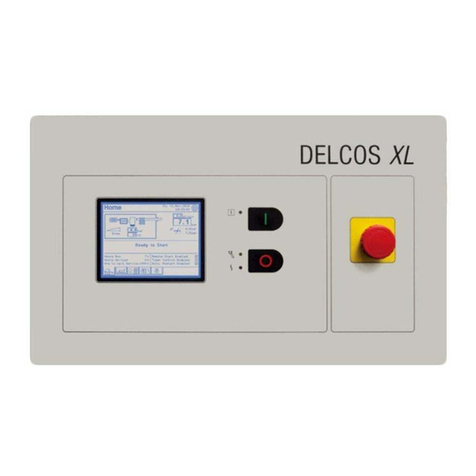
CompAir
CompAir DELCOS XL Series Translation of the original operating instructions
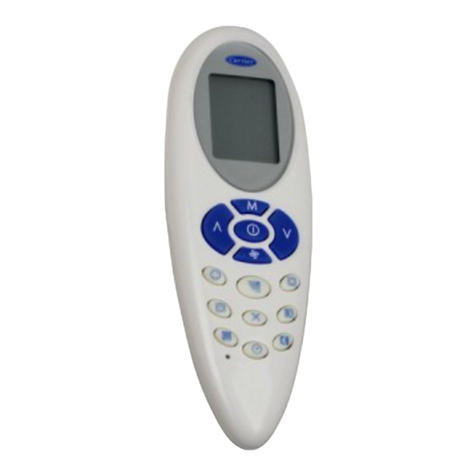
Carrier
Carrier HDB installation manual
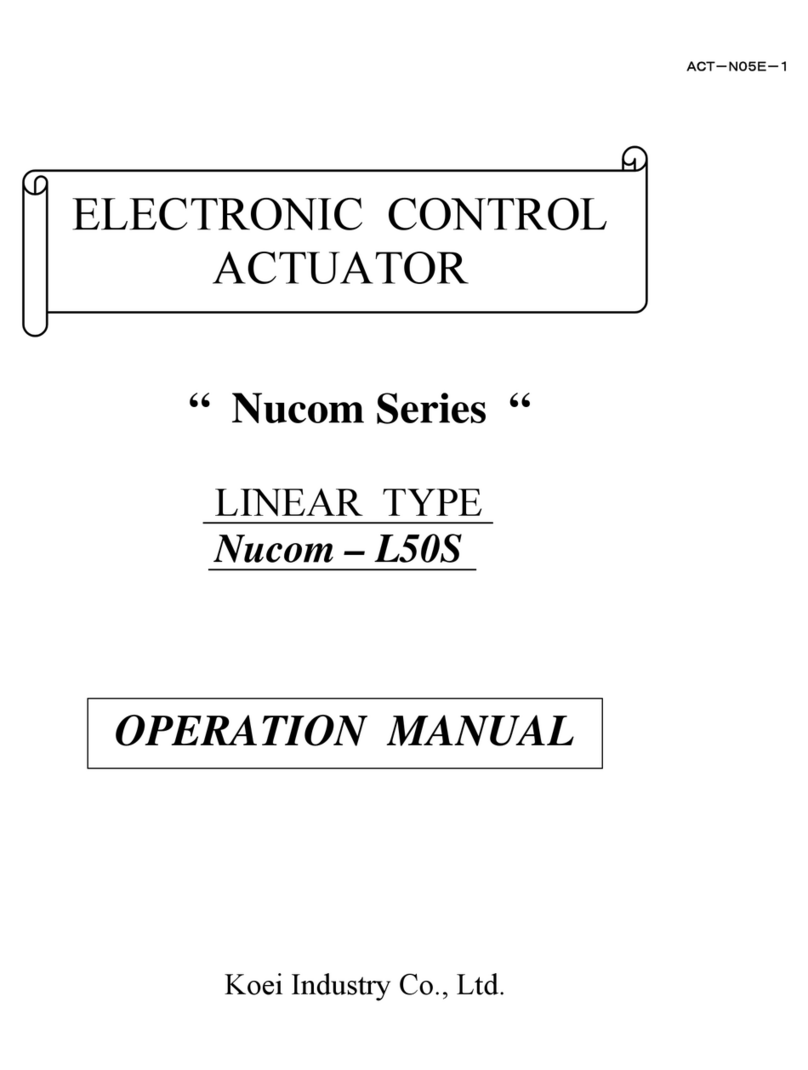
Koei Industry
Koei Industry Nucom L50S Operation manual
